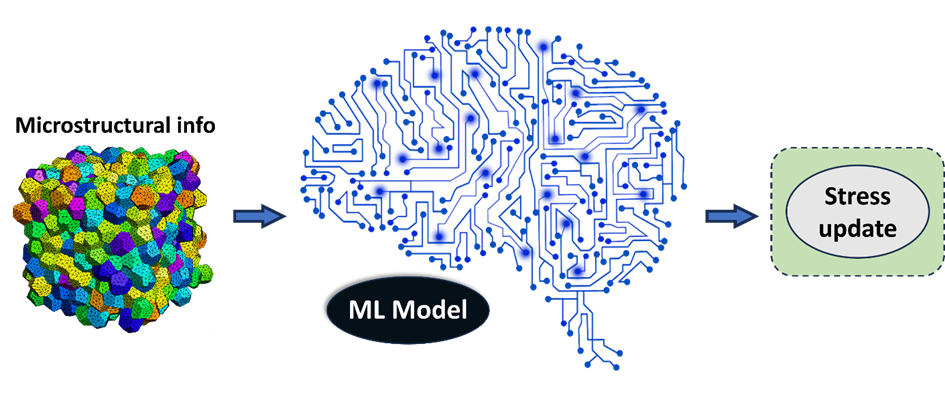Duration: 2023-2027
Funding: NWO - Perspectief
ABOUT THE PROJECT

As the project title suggests, this research focuses on constitutive modeling approaches where data is crucial. Specifically, machine learning algorithms and methods are essential tools for advancing the project. As part of the DEPMAT super project, WP1b aims to develop a model using machine learning techniques to predict material behavior in a physically consistent manner.
Conventional approaches to constitutive modeling of materials are generally divided into empirical models based on phenomenological observations and physically-based models. Constitutive models for various behaviors are typically developed through a similar procedure. The empirical approach involves testing and observing a material's behavior, formulating a mathematical model that best represents this behavior, and determining the model’s parameters. This initial model is then used to predict untested loading paths, with results compared to new or existing experiments. To account for any unexplained behaviors, the model is subsequently modified. These empirical models, based on experimental observations, can be prone to inaccuracies and uncertainties, leading to potential errors, especially in complex systems or those with high-dimensional phase spaces. Errors can stem from biases in selecting the mathematical model or noise in experimental data. Additionally, empirical models are time-consuming to develop.
In contrast, physically-based or mechanistic models, such as crystal plasticity, aim to describe material behavior based on the underlying physical laws and principles. These models are developed by understanding the microstructural mechanisms within the material under different conditions, such as plastic deformation, phase transformations, or damage evolution. Physically-based models feature fewer parameters, which have explicit physical interpretations that directly correlate with the material's properties or microstructural characteristics. While these models offer enhanced predictive capabilities, their application is time-intensive and computationally demanding.
These limitations have driven researchers to seek alternative material constitutive modeling methods. Over the past decades, the use of data-based techniques and methods in materials science and computational mechanics has increased significantly, driven by advances in computer science and the shortcomings of traditional methods. The complexity of classical models, characterized by numerous free parameters and the computational demands of their simulations, has motivated researchers to explore more efficient and accurate modeling approaches.






